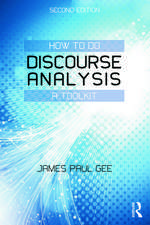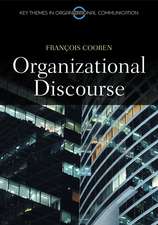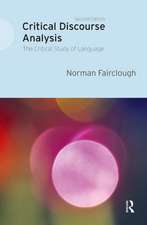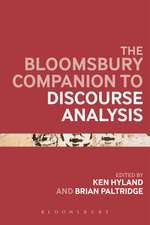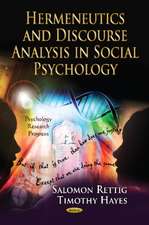The Stylistics of Poetry: Context, cognition, discourse, history: Advances in Stylistics
Autor Professor Peter Verdonken Limba Engleză Paperback – 14 aug 2013
Din seria Advances in Stylistics
- 14%
 Preț: 567.77 lei
Preț: 567.77 lei - 18%
 Preț: 180.60 lei
Preț: 180.60 lei - 13%
 Preț: 238.38 lei
Preț: 238.38 lei -
 Preț: 256.64 lei
Preț: 256.64 lei - 13%
 Preț: 256.74 lei
Preț: 256.74 lei -
 Preț: 236.84 lei
Preț: 236.84 lei - 11%
 Preț: 217.48 lei
Preț: 217.48 lei - 13%
 Preț: 238.84 lei
Preț: 238.84 lei -
 Preț: 257.27 lei
Preț: 257.27 lei -
 Preț: 257.57 lei
Preț: 257.57 lei - 13%
 Preț: 257.27 lei
Preț: 257.27 lei - 13%
 Preț: 256.18 lei
Preț: 256.18 lei -
 Preț: 253.95 lei
Preț: 253.95 lei - 13%
 Preț: 257.16 lei
Preț: 257.16 lei - 13%
 Preț: 256.44 lei
Preț: 256.44 lei - 23%
 Preț: 200.40 lei
Preț: 200.40 lei - 23%
 Preț: 222.98 lei
Preț: 222.98 lei - 23%
 Preț: 229.51 lei
Preț: 229.51 lei - 21%
 Preț: 217.83 lei
Preț: 217.83 lei - 23%
 Preț: 198.83 lei
Preț: 198.83 lei -
 Preț: 197.82 lei
Preț: 197.82 lei - 33%
 Preț: 168.61 lei
Preț: 168.61 lei -
 Preț: 254.04 lei
Preț: 254.04 lei
Preț: 223.77 lei
Nou
Puncte Express: 336
Preț estimativ în valută:
42.83€ • 44.96$ • 35.38£
42.83€ • 44.96$ • 35.38£
Carte tipărită la comandă
Livrare economică 31 ianuarie-14 februarie 25
Preluare comenzi: 021 569.72.76
Specificații
ISBN-13: 9781441167903
ISBN-10: 1441167900
Pagini: 216
Dimensiuni: 156 x 234 x 13 mm
Greutate: 0.34 kg
Editura: Bloomsbury Publishing
Colecția Bloomsbury Academic
Seria Advances in Stylistics
Locul publicării:London, United Kingdom
ISBN-10: 1441167900
Pagini: 216
Dimensiuni: 156 x 234 x 13 mm
Greutate: 0.34 kg
Editura: Bloomsbury Publishing
Colecția Bloomsbury Academic
Seria Advances in Stylistics
Locul publicării:London, United Kingdom
Caracteristici
Covers
Auden,
Larkin,
Heaney
and
general
topics
such
as
stylistic
theory
and
cognitive
stylistics.
Notă biografică
Peter
Verdonk
is
Emeritus
Professor
of
Stylistics,
University
of
Amsterdam,
the
Netherlands.
His
books
includeTwentieth-century
Poetry(1993)
andStylistics(2002),Literature
and
the
New
Interdisciplinarity(1994,
with
Roger
D.
Sell),Twentieth-century
Fiction(1995,
with
Jean
Jacques
Weber),
and
Exploring
the
Language
of
Drama(1998,
with
Jonathan
Culpeper
and
Mick
Short).
Cuprins
Preface
\
Acknowledgments
\
1.
Introduction:
Context,
Cognition,
Discourse,
History:
Peter
Verdonk's
Stylistics
of
Poetry,
Dan
McIntyre
\
2.
Poetic
Artifice
and
Literary
Stylistics
\
3.
"We
have
art
in
order
that
we
may
not
perish
from
truth"
:
The
Universe
of
Discourse
in
Auden's
'Musée
des
Beaux
Arts'
\
4.
Who
are
the
Performers
of
Owen's
"Anthem
for
Doomed
Youth"?
\
5.
The
Language
of
Poetry:
The
Application
of
Literary
Stylistic
Theory
in
University
Teaching
\
6.
Poems
as
Text
and
Discourse:
The
Poetics
of
Philip
Larkin
\
7.
Poetry
and
Public
Life:
a
Contextualized
Reading
of
Seamus
Heaney's
'Punishment'
\
8.
The
Liberation
of
the
Icon:
A
Brief
Survey
from
Classical
Rhetoric
to
Cognitive
Stylistics
\
9.
Painting,
Poetry,
Parallelism:
Ekphrasis,
Stylistics
and
Cognitive
Poetics
\
10.
Style
\
11.
A
Cognitive
Stylistic
Readng
of
Rhetorical
Patterns
in
Ted
Hughes's
'Hawk
Roosting':
A
Possible
Role
for
Stylistics
in
a
Literary
Critical
Controversy
\
Bibliography
\
Index
Recenzii
This
collection
of
essays
by
Peter
Verdonk
is
a
joy
to
read
on
a
number
of
levels.
Verdonk
presents
his
arguments
clearly
and
in
a
logically
coherent
sequence
...
and
[writes]
with
ease
and
elegance
Peter Verdonk has long been an 'ambassador for stylistics'. For thirty years and more, he has championed a language-minded analytical appreciation of English poetry from his academic home at the University of Amsterdam, inspiring a large number of students in the process . Previously Verdonk wrote one form of apologia for his version of Stylistics in his 2002 contribution to Henry Widdowson's 'OILS' series . Now he has published a second overview of Stylistics, but with much more of a personal account and a usefully diachronic perspective (the 'history' of his sub-title). This is very welcome since a historicized stylistics is something which has gone underdeveloped in recent years.
I think that stylisticians, along with discourse analysts and cognitive linguists with an interest in literature, will benefit from reading this book. Firstly, it provides the stylistician with a wealth of valuable insights into the discursive and cognitive aspects of poetic language, and Verdonk's own contributions to both discursive stylistics and cognitive stylistics are now available to the stylistician in one concise and easily accessible volume. Secondly, the discourse analyst will find that many of the principles from his or her discipline are alsoapplicable to the analysis of poetry, and, perhaps more importantly, that application of these may result in new understandings of poetry as discourse. Thirdly, a cognitive linguist, such as myself, will not only find that the brief exposés of cognitive stylistics serve as very useful entry points into cognitive stylistics, but also that application of cognitive science in the analysis of poetic language casts light on both poetic language in its cognitive function and the wealth of creative potential that resides in human cognition. Moreover, linguists andliterary critics who are simply interested in each other's work should read the volume simply because of the way it bridges the gap between linguistics and literary criticism in a way that respects, appreciates, and validates the work on both sides of the gap.
This collection of Peter Verdonk's articles will be essential reading for anyone interested in poetry and how we interact with, and respond to, the language of poems. Bringing Peter Verdonk's articles on poetry together into one volume in this way also provides an invaluable resource for students learning the art of the stylistic analysis of poetry.
Every stylistics undergraduate student should read this book, as there is no better model than Verdonk's to show them how to conduct a sophisticated, erudite and poignant stylistic analysis of poetry. In a clear and informative fashion Verdonk takes you by the hand and shows you the wonders of how literary meaning can be uncovered by means of impeccable linguistic analysis.
The papers in this book trace and define the field of stylistics. They are elegant and exemplary, sharp with insight and possess a beauty of fine analysis. If anyone ever asks for an example of the highest achievements in literary stylistics, simply hand them this book.
A perfect guide to a deeper engagement with poetry. An inspiring and beautifully written collection of readings underlining in every chapter how linguistic analysis can illuminate key patterns of meaning across texts and contexts.
Peter Verdonk has long been an 'ambassador for stylistics'. For thirty years and more, he has championed a language-minded analytical appreciation of English poetry from his academic home at the University of Amsterdam, inspiring a large number of students in the process . Previously Verdonk wrote one form of apologia for his version of Stylistics in his 2002 contribution to Henry Widdowson's 'OILS' series . Now he has published a second overview of Stylistics, but with much more of a personal account and a usefully diachronic perspective (the 'history' of his sub-title). This is very welcome since a historicized stylistics is something which has gone underdeveloped in recent years.
I think that stylisticians, along with discourse analysts and cognitive linguists with an interest in literature, will benefit from reading this book. Firstly, it provides the stylistician with a wealth of valuable insights into the discursive and cognitive aspects of poetic language, and Verdonk's own contributions to both discursive stylistics and cognitive stylistics are now available to the stylistician in one concise and easily accessible volume. Secondly, the discourse analyst will find that many of the principles from his or her discipline are alsoapplicable to the analysis of poetry, and, perhaps more importantly, that application of these may result in new understandings of poetry as discourse. Thirdly, a cognitive linguist, such as myself, will not only find that the brief exposés of cognitive stylistics serve as very useful entry points into cognitive stylistics, but also that application of cognitive science in the analysis of poetic language casts light on both poetic language in its cognitive function and the wealth of creative potential that resides in human cognition. Moreover, linguists andliterary critics who are simply interested in each other's work should read the volume simply because of the way it bridges the gap between linguistics and literary criticism in a way that respects, appreciates, and validates the work on both sides of the gap.
This collection of Peter Verdonk's articles will be essential reading for anyone interested in poetry and how we interact with, and respond to, the language of poems. Bringing Peter Verdonk's articles on poetry together into one volume in this way also provides an invaluable resource for students learning the art of the stylistic analysis of poetry.
Every stylistics undergraduate student should read this book, as there is no better model than Verdonk's to show them how to conduct a sophisticated, erudite and poignant stylistic analysis of poetry. In a clear and informative fashion Verdonk takes you by the hand and shows you the wonders of how literary meaning can be uncovered by means of impeccable linguistic analysis.
The papers in this book trace and define the field of stylistics. They are elegant and exemplary, sharp with insight and possess a beauty of fine analysis. If anyone ever asks for an example of the highest achievements in literary stylistics, simply hand them this book.
A perfect guide to a deeper engagement with poetry. An inspiring and beautifully written collection of readings underlining in every chapter how linguistic analysis can illuminate key patterns of meaning across texts and contexts.






